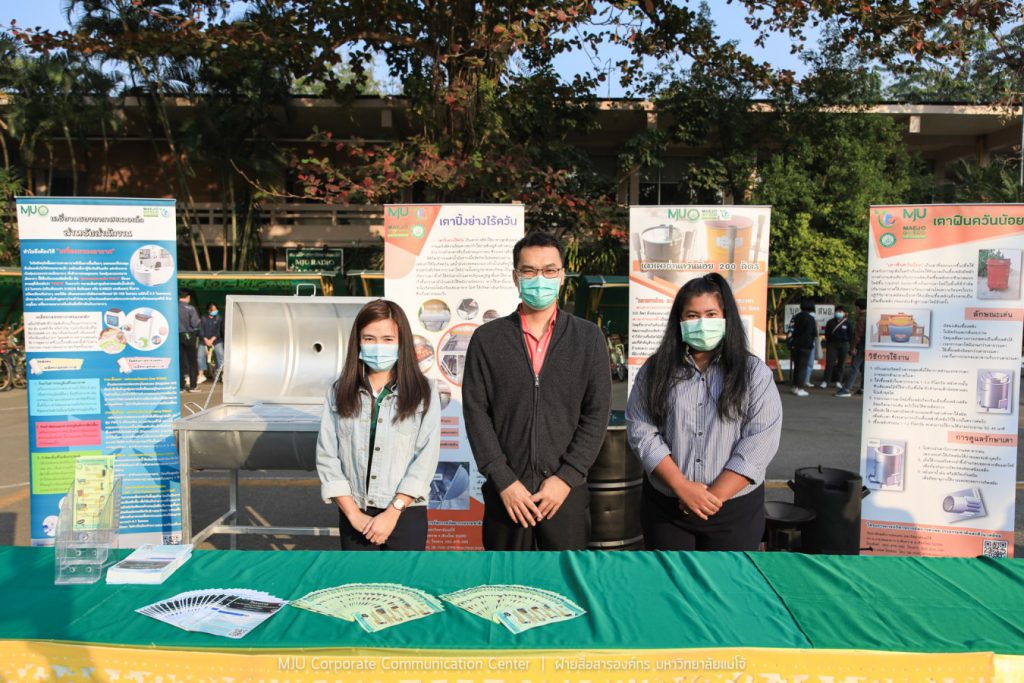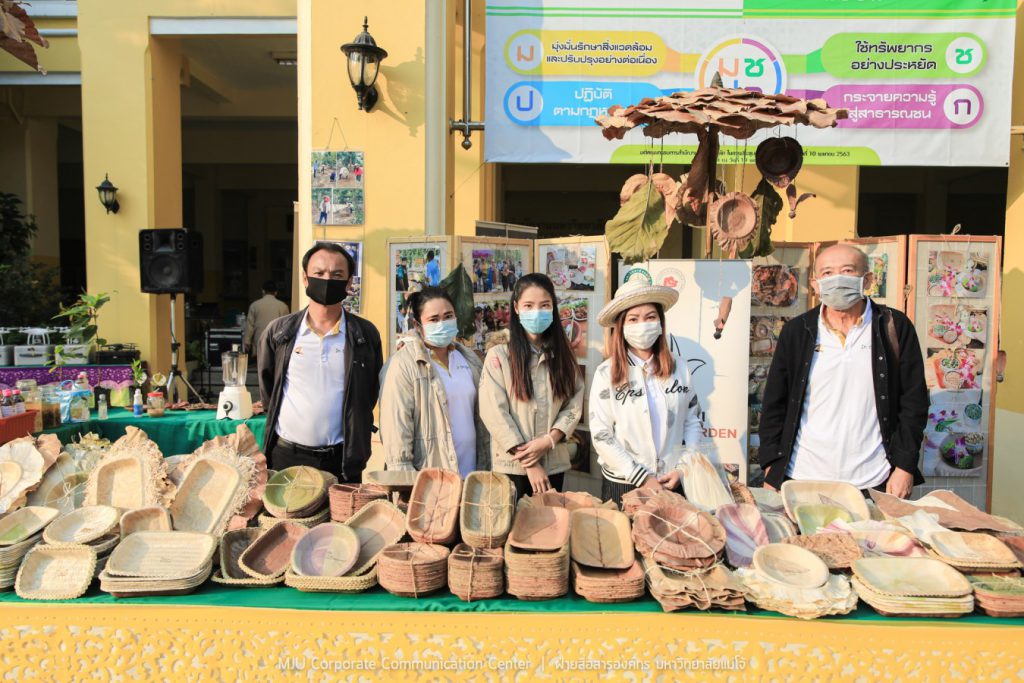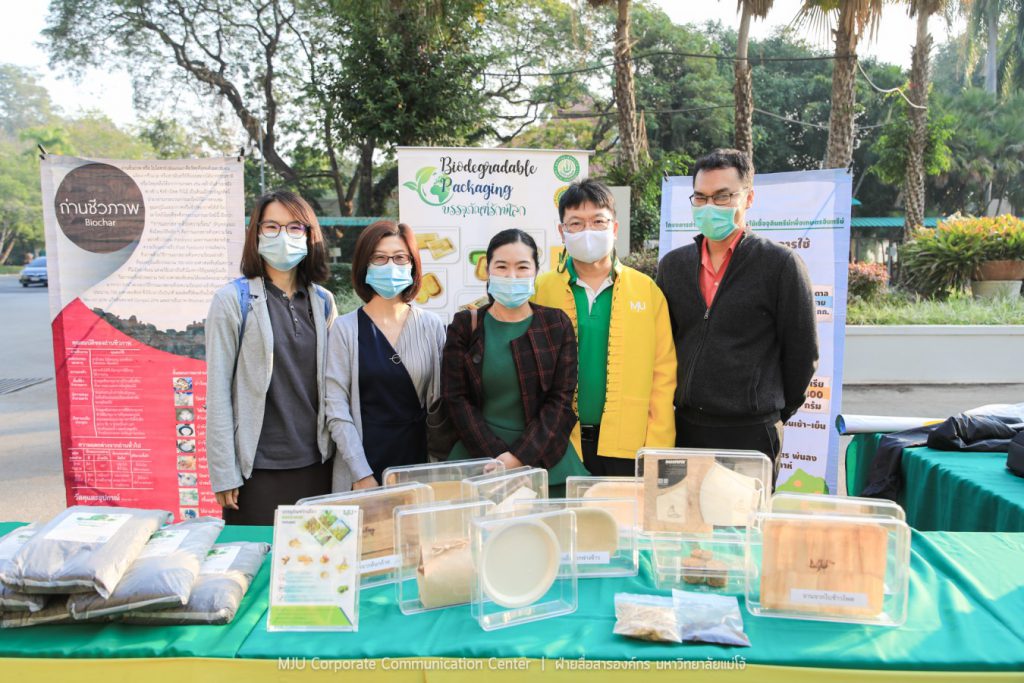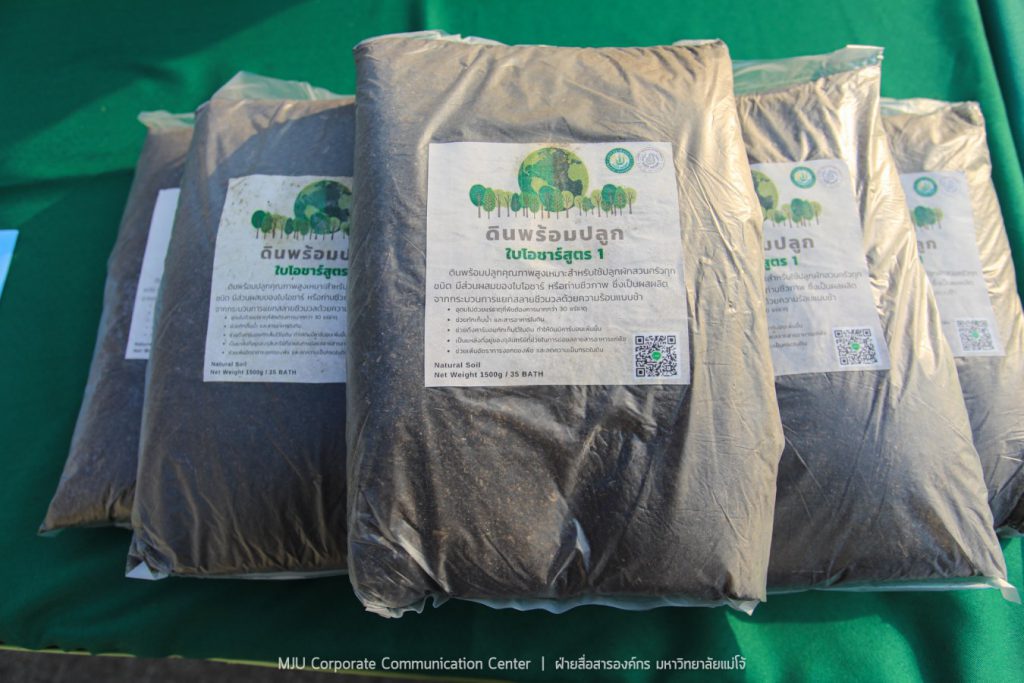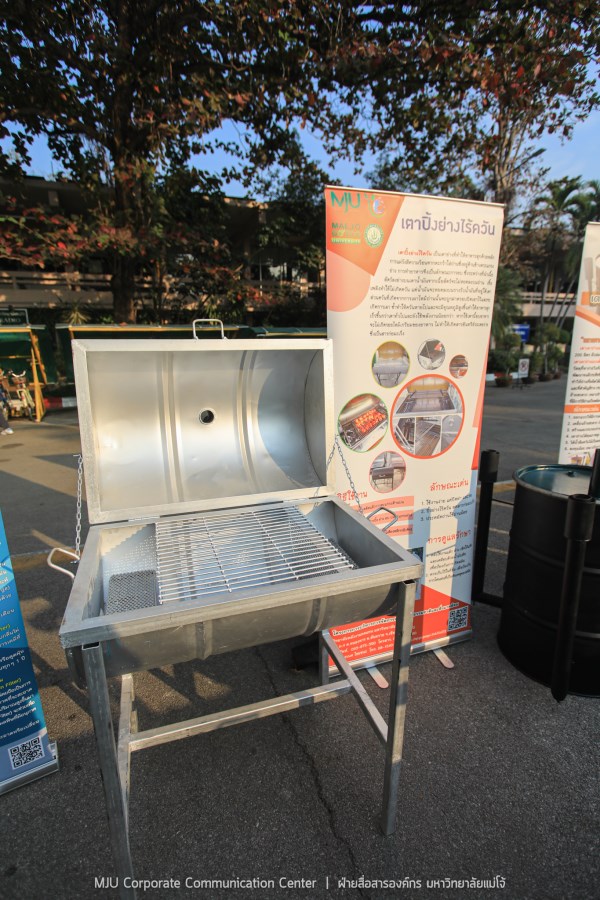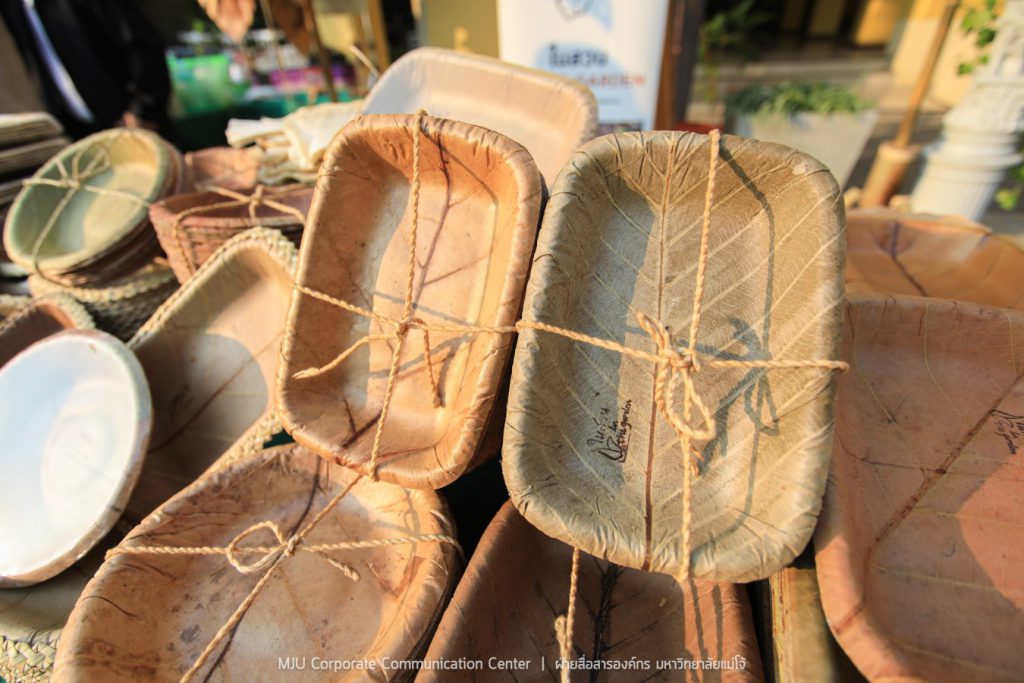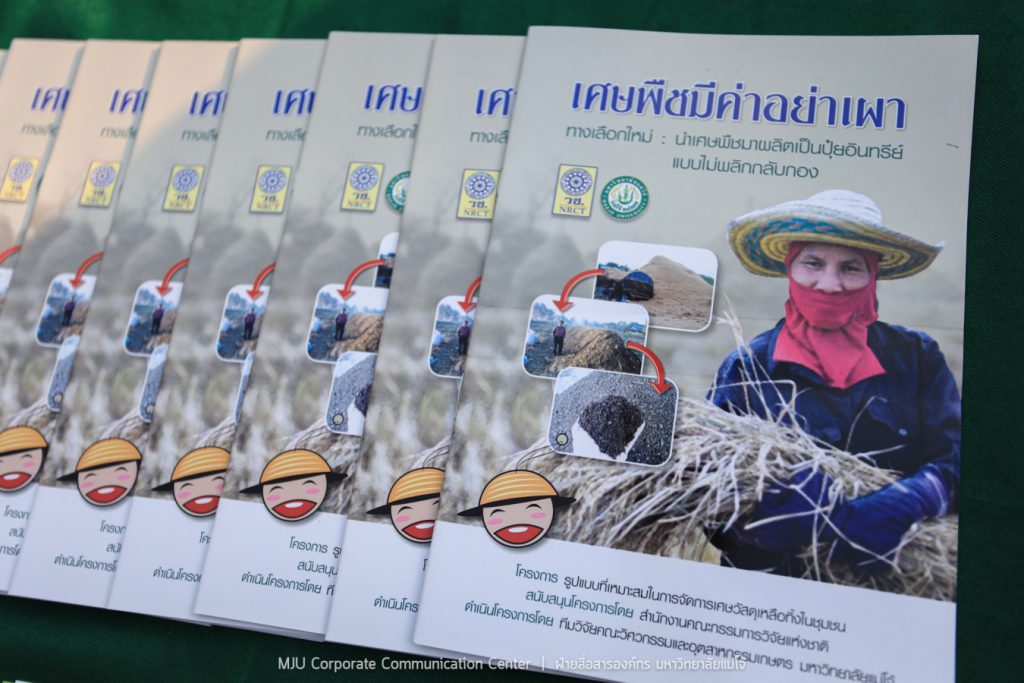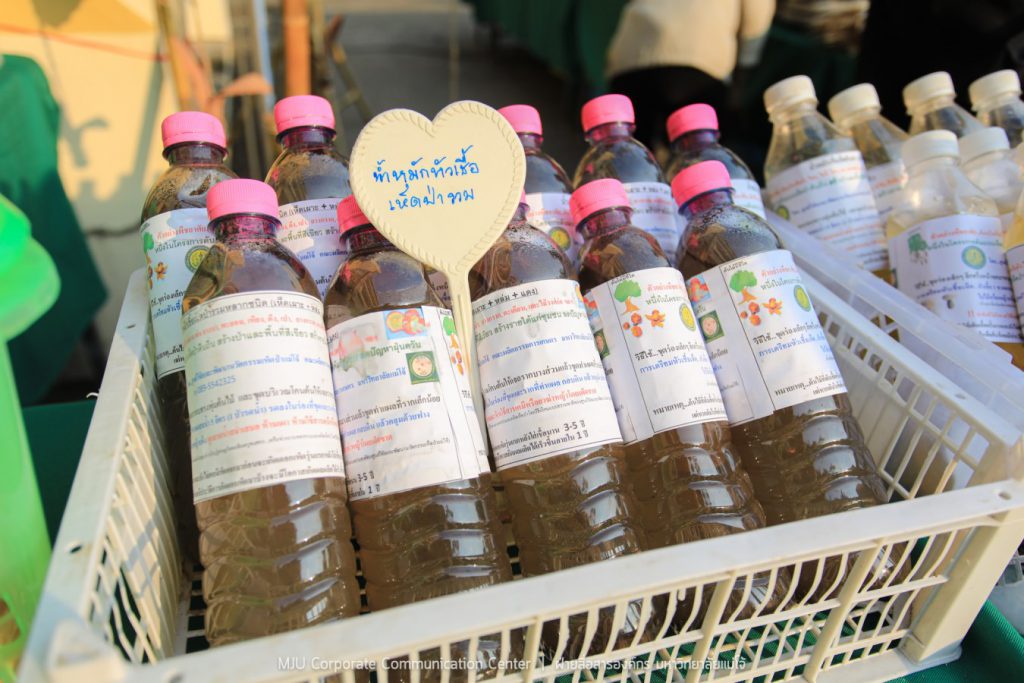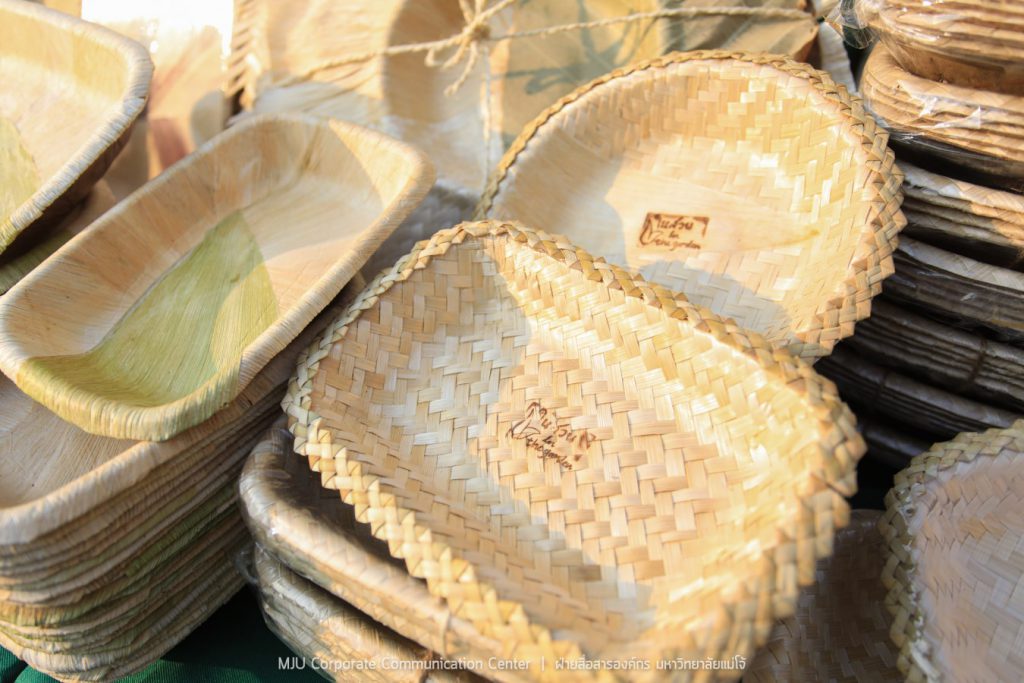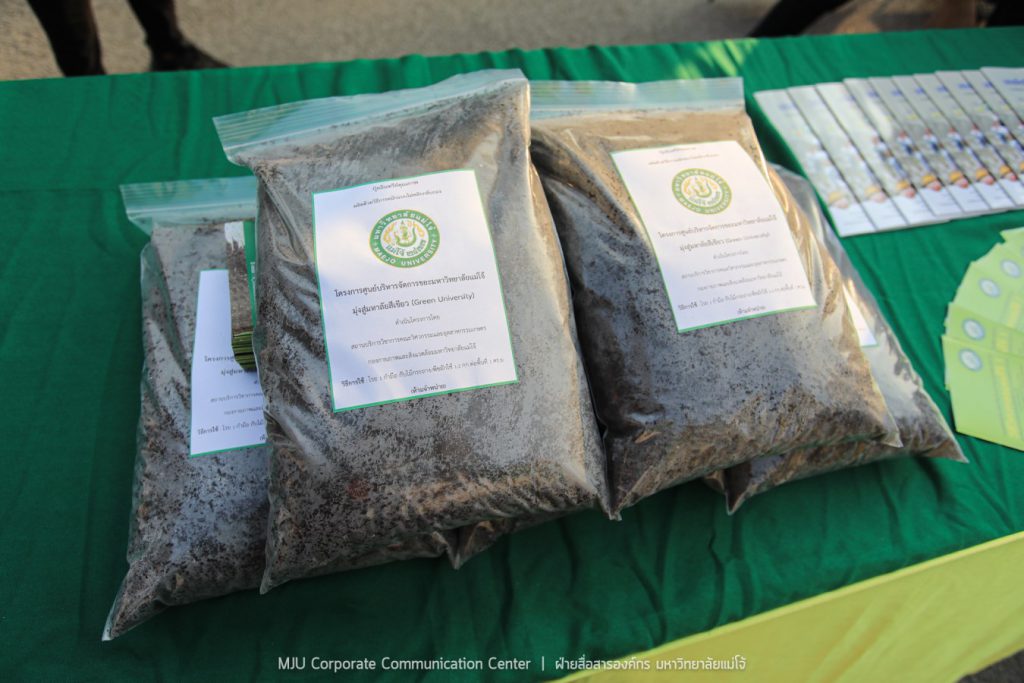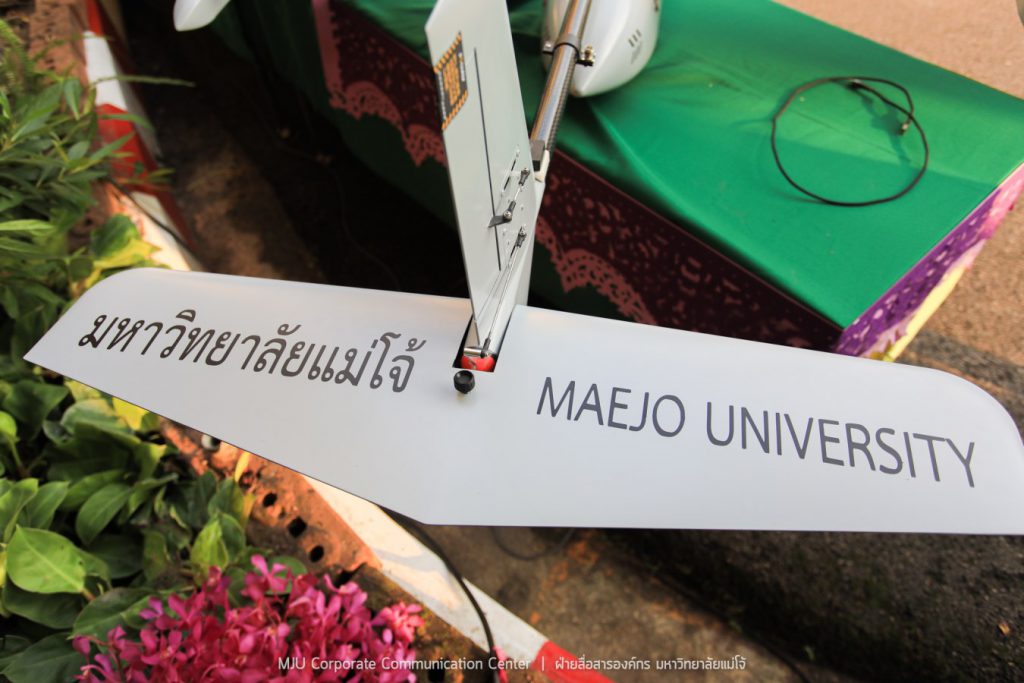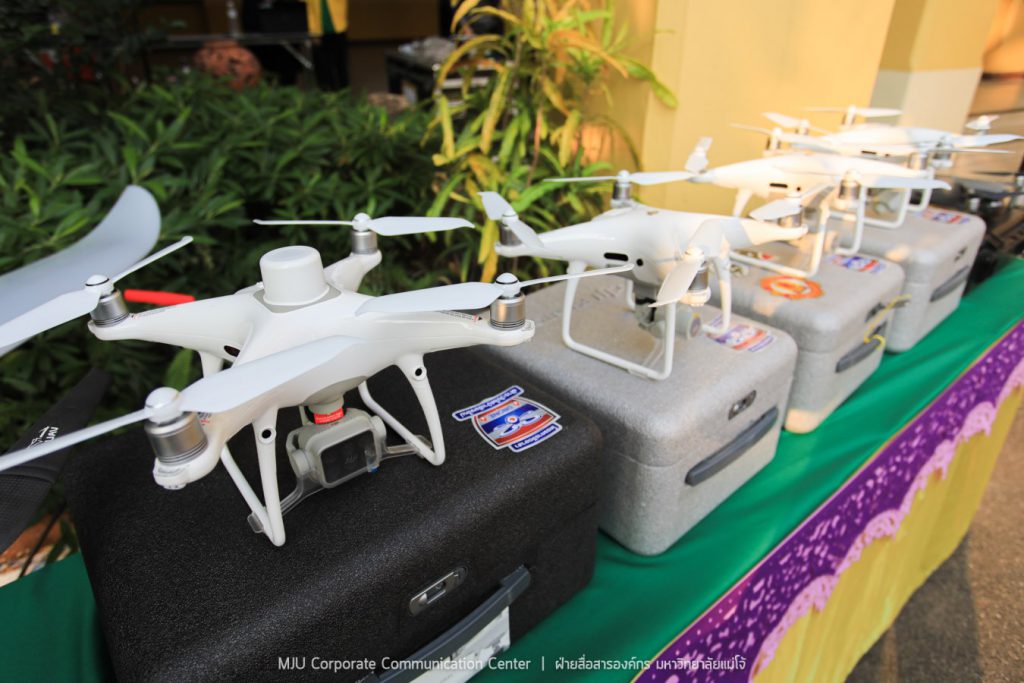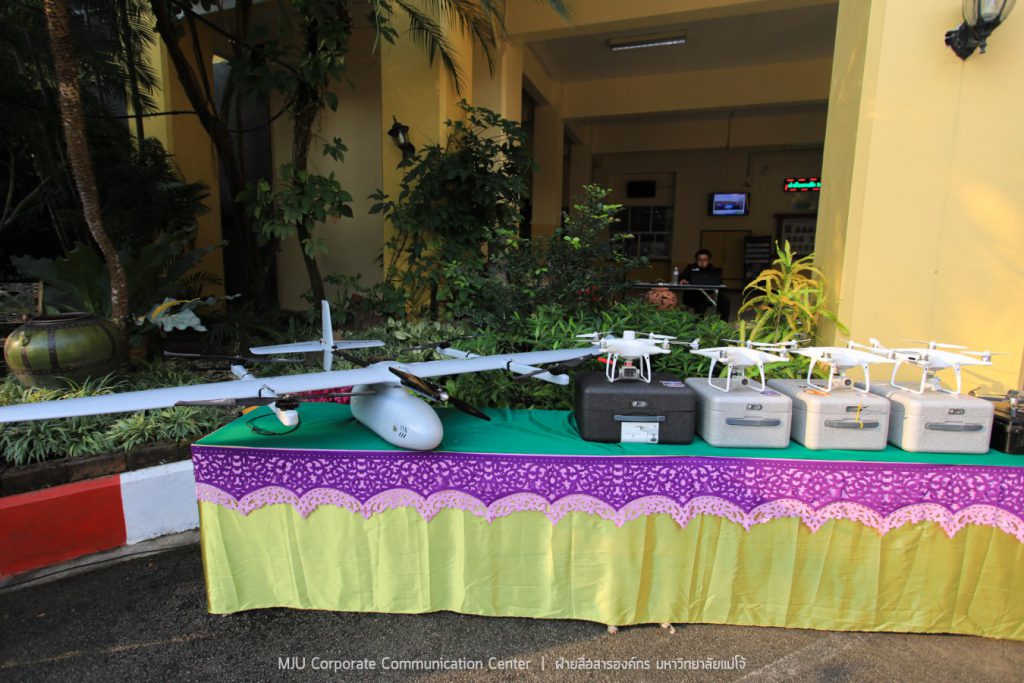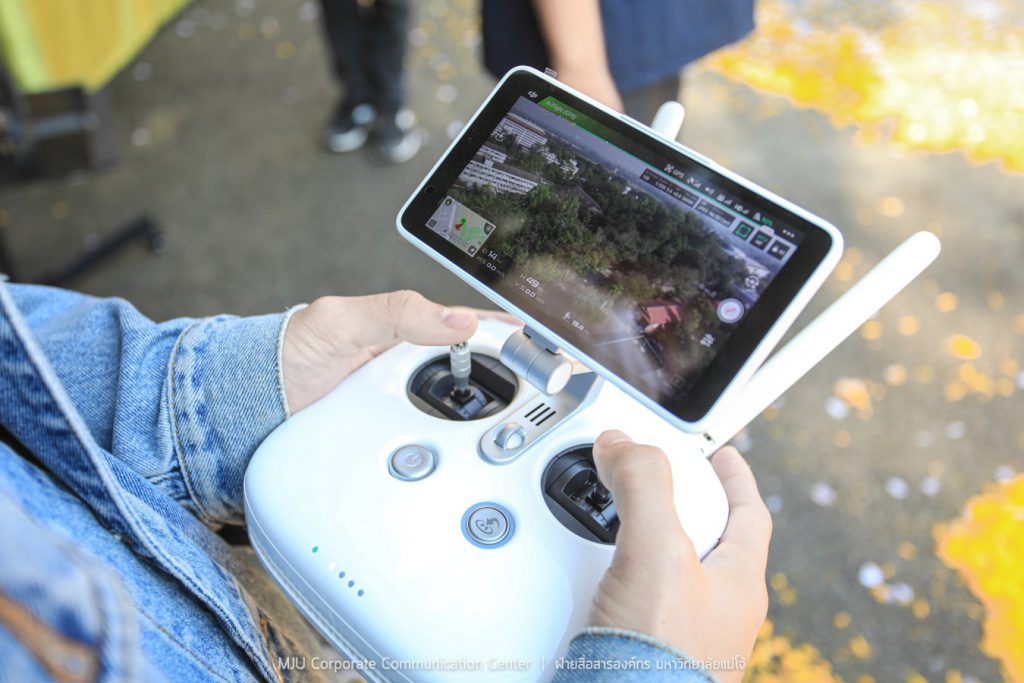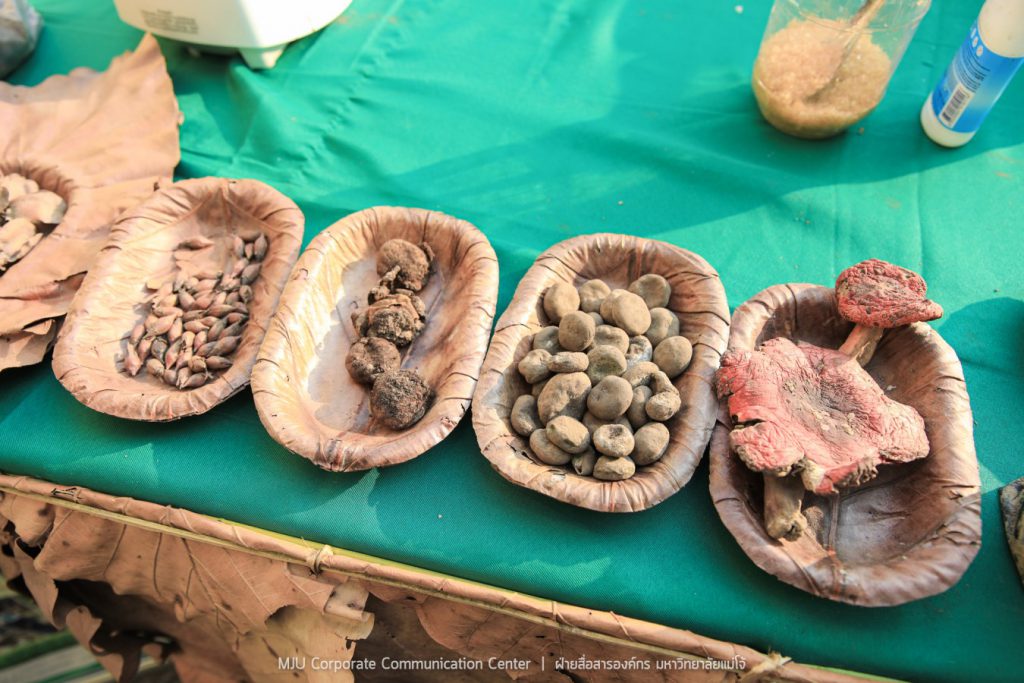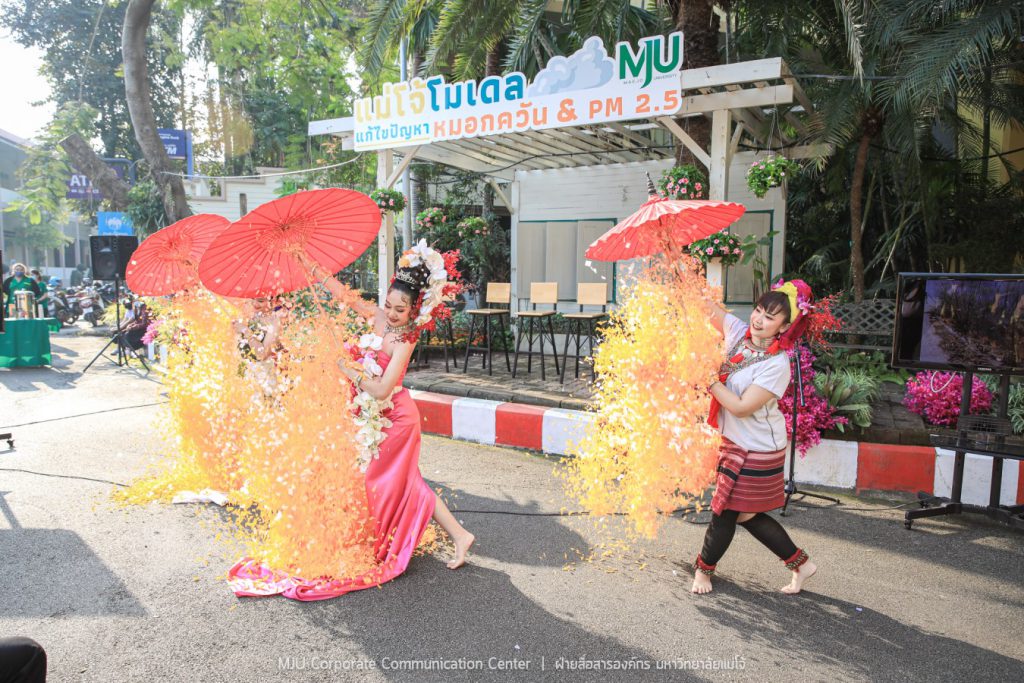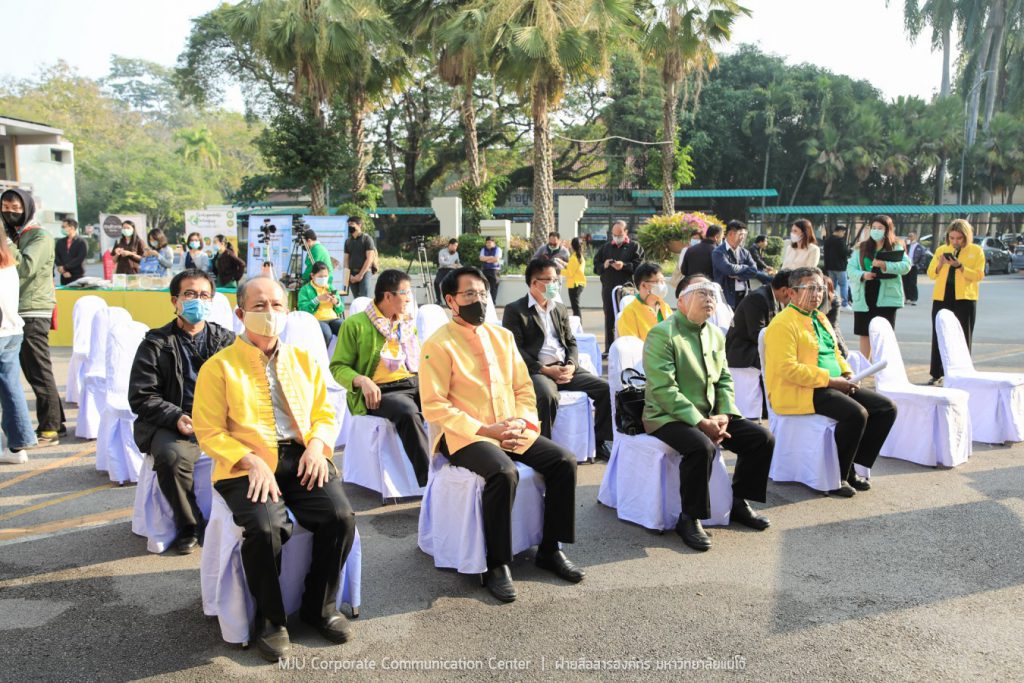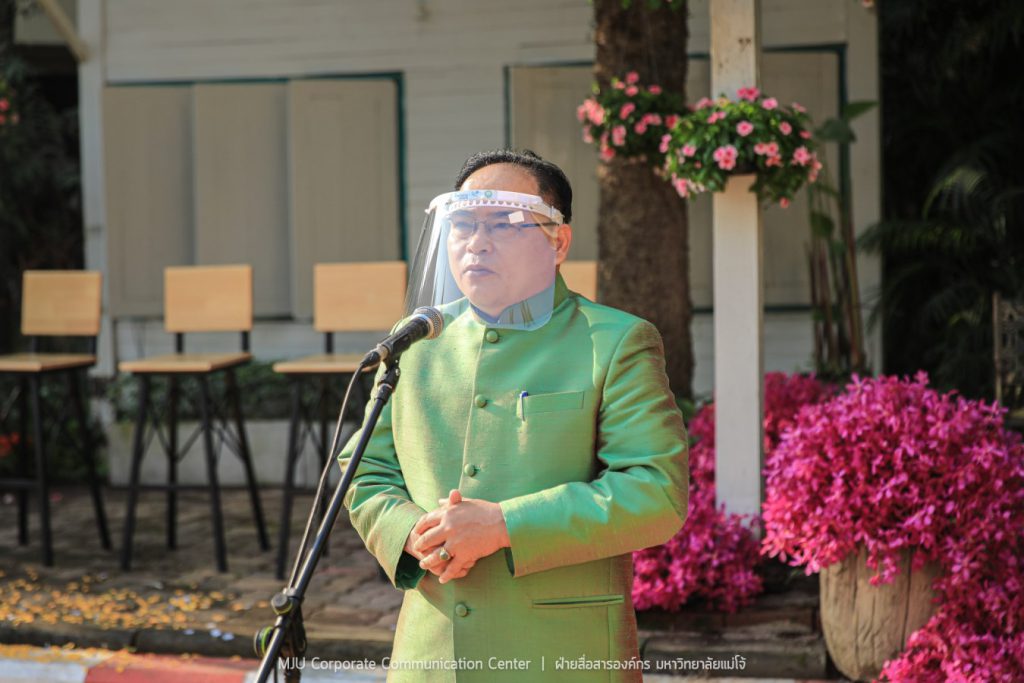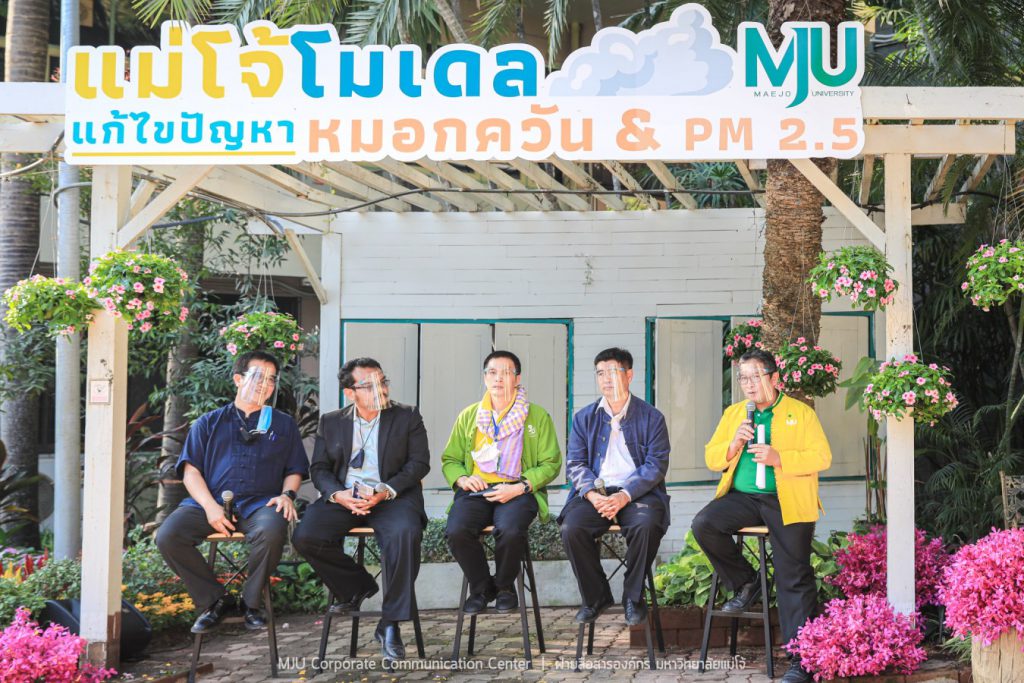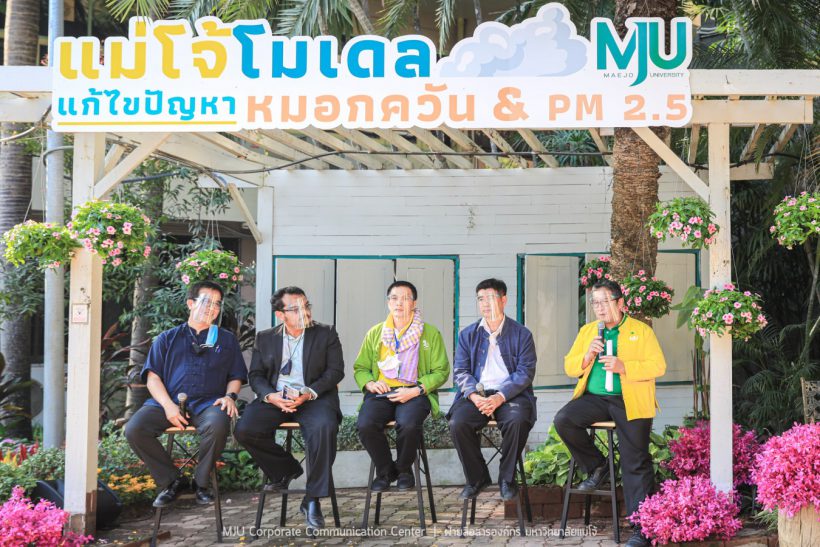Wednesday 20 January 2021 Associate Professor Dr. Weeraphon Thongma, President of Mae Jo University Presided over the press conference Integrated and sustainable management of forest fire haze problem (Mae Jo – model Reduce haze and forest fires) together with Associate Professor Pavin Manochai, Vice President, Ajarn Jakkaphong Chaiwong, Assistant Dean of the Faculty of Agriculture, Assistant Professor Dr. Thanet Chaiyachana, Associate Dean of the College of Alternative Energy for Academic and Student Development, Associate Professor Dr. Somkiat Chaipiboon, Dean of the Faculty of Information and Communication, and Associate Professor Dr. Apinan Suwannarak, Director of the Office of Agricultural Research and Extension As a participant in a press conference As well as exhibitions, research and innovation related to joint management of haze and forest fires, both upstream, midstream and downstream in a complete and sustainable system at the front of the office of the President Maejo University, Chiang Mai
Maejo University Hold a press conference on the comprehensive and sustainable management of haze and forest fires. By integrating seamlessly with knowledge of agriculture, technology, innovation, management and cooperation with academics. Researchers with the knowledge and ability to support the comprehensive and sustainable management of haze and forest fires. The processes that cover upstream, middle and downstream with the owner of the area Government officials Local Administrative Organization On the basis of subsistence agriculture for survival and for sustainability based on resources and culture Emphasize self-reliance, which is the basic aptitude of Maejo University. From mountain to sea Such as the Mae Chaem Model Project Saraphi Model Project Sansai Model Project Highland Protein Food Security Project Learning for a good life (food, medicine, cloth, ban) project, soil, water, forest, wisdom, occupation, creative donation community building project Breath Council Project Tree Doctor Project and others
- Create food by starting at the root of the problem.
With the knowledge of agriculture for sustenance for survival and for sustainability With the new theory of agriculture Organic Smart agriculture, integrated agriculture, aquaculture, pig farming, chicken farming, goat farming, reforestation, occupation, water management, wet forest with water distribution ponds, forest moisture Survey of heat points Surveying and monitoring of vulnerable areas by UAV, educating communities, society, schools, temples on haze and forest fire management - Build a career through more productive activities. And processing with the right technology leads to sales that meet the market needs.
It aims to create a career and generate income, which is a way to make people self-reliant by their own local resource base.
2.1 Plant production, for example, three forests are four benefits. Local organic plant seeds Wild mushrooms reduce container burning, planting material from agricultural waste. Organic planting material, compost, soil nourishing agent, Maejo formula
2.2 Animal production such as fish farming with rice straw. Local fish breeding, local hen and hen bank Local broiler Beef cows are fed with self-fermented thick food. Organic animal feed Including organic slaughterhouses
2.3 Reducing energy or using natural energy Such as renewable energy technology to reduce smoke Solar energy, wind power, etc.
2.4 Processing of agricultural products using renewable energy Processing products that are marketable And add value Such as dried herbs, dried or extracted essence
2.5 Creating a multi-channel marketing Build consumption in the community Build online marketing links Create a new career Finding new markets
2.6 Ecotourism and conservation - Create weapons (intelligence), develop knowledge continuously and support the work of the central.
Knowledge is learned and accumulated in order to be able to solve problems and raise knowledge to increase production potential. This results in good income and leads to coexistence with a good environment.
3.1 Towards wisdom, supports many communities and schools Build and develop communities until they can support themselves. Promote education
3.2 for the environment, such as simple, cheap air purifiers, self-made, forested areas Air purification trees Waste management according to the Zero Waste guidelines for biochar production Wood vinegar production Measurement and alarm of dust in the air Support to identify forest fire haze points to staff by using UAV volunteers to prevent forest fires to reduce GHG Emission more than 10,000 kg CO2-eq / year)
3.3 Towards Partners There are more than 20 partner agencies from the public and private sectors such as Chiang Mai Social Enterprise Company. Third Army County, schools, temples, universities, more than 100 communities, youth groups in the school to reduce haze. Generate income and reduce household expenses.
A holistic action that is based on local resources, with the development and enhancement of all values. Work together to solve problems in the mouth by creating food security. When you understand, produce a lot, transform to add value to create a career. Until expertise leads to the creation of experience as a body of knowledge that can be used to develop sustainable economic, social and environmental needs. The community is rooted in a circular economy, BCG, leading to sustainable development (SDG), which is how Maejo has always and continues to do. “Maejo Model: Solving the problem of haze and forest fires by integrating the various science of the university to create food, occupation and weapons (intelligence) for good health. Not leaving wisdom and culture “

